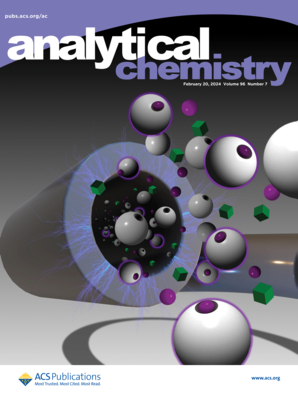The Role of Chloride in Raman Signal Enhancement by Electrochemical Silver Oxidation Revealed by Dark Field Microscopy
IF 6.7
1区 化学
Q1 CHEMISTRY, ANALYTICAL
引用次数: 0
Abstract
Raman spectroscopy is a widely used technique in several contexts, including chemical analysis, materials characterization, and catalysis. However, to exploit the high capacities of this technique, signal enhancement is needed. For this purpose, several methodologies can be used, and those known as surface enhanced Raman scattering (SERS), or resonance Raman (RR) have been widely used. However, there are some new strategies, such as electrochemical surface oxidation enhanced Raman scattering (EC-SOERS), that require further understanding for optimum exploitation in diverse analytical contexts. In EC-SOERS, the enhancement of the Raman signal is observed during the electrochemical oxidation of silver in the presence of a precipitating agent, but only for specific concentrations of this agent. In this work, we use electrochemical dark-field microscopy (DFM) to explore and reveal the origin of this concentration dependency by monitoring the oxidative formation of EC-SOERS substrates in solutions of different chloride concentrations. These operando studies provide a complete picture of the processes taking place on the electrode surface and at the solution adjacent to it with a high time resolution, showing that the formation of the EC-SOERS substrate requires sufficient Cl– to generate AgCl nanocrystals without blocking the surface and allowing the release of Ag+ cations. Thanks to the gained mechanistic insights, the selection of a suitable precipitation agent concentration can move from a trial and error selection process to a knowledge-based selection, allowing the rational design of different SOERS substrates that will facilitate the efficient application of SOERS in different research contexts

求助全文
约1分钟内获得全文
求助全文
来源期刊

Analytical Chemistry
化学-分析化学
CiteScore
12.10
自引率
12.20%
发文量
1949
审稿时长
1.4 months
期刊介绍:
Analytical Chemistry, a peer-reviewed research journal, focuses on disseminating new and original knowledge across all branches of analytical chemistry. Fundamental articles may explore general principles of chemical measurement science and need not directly address existing or potential analytical methodology. They can be entirely theoretical or report experimental results. Contributions may cover various phases of analytical operations, including sampling, bioanalysis, electrochemistry, mass spectrometry, microscale and nanoscale systems, environmental analysis, separations, spectroscopy, chemical reactions and selectivity, instrumentation, imaging, surface analysis, and data processing. Papers discussing known analytical methods should present a significant, original application of the method, a notable improvement, or results on an important analyte.
 求助内容:
求助内容: 应助结果提醒方式:
应助结果提醒方式:


